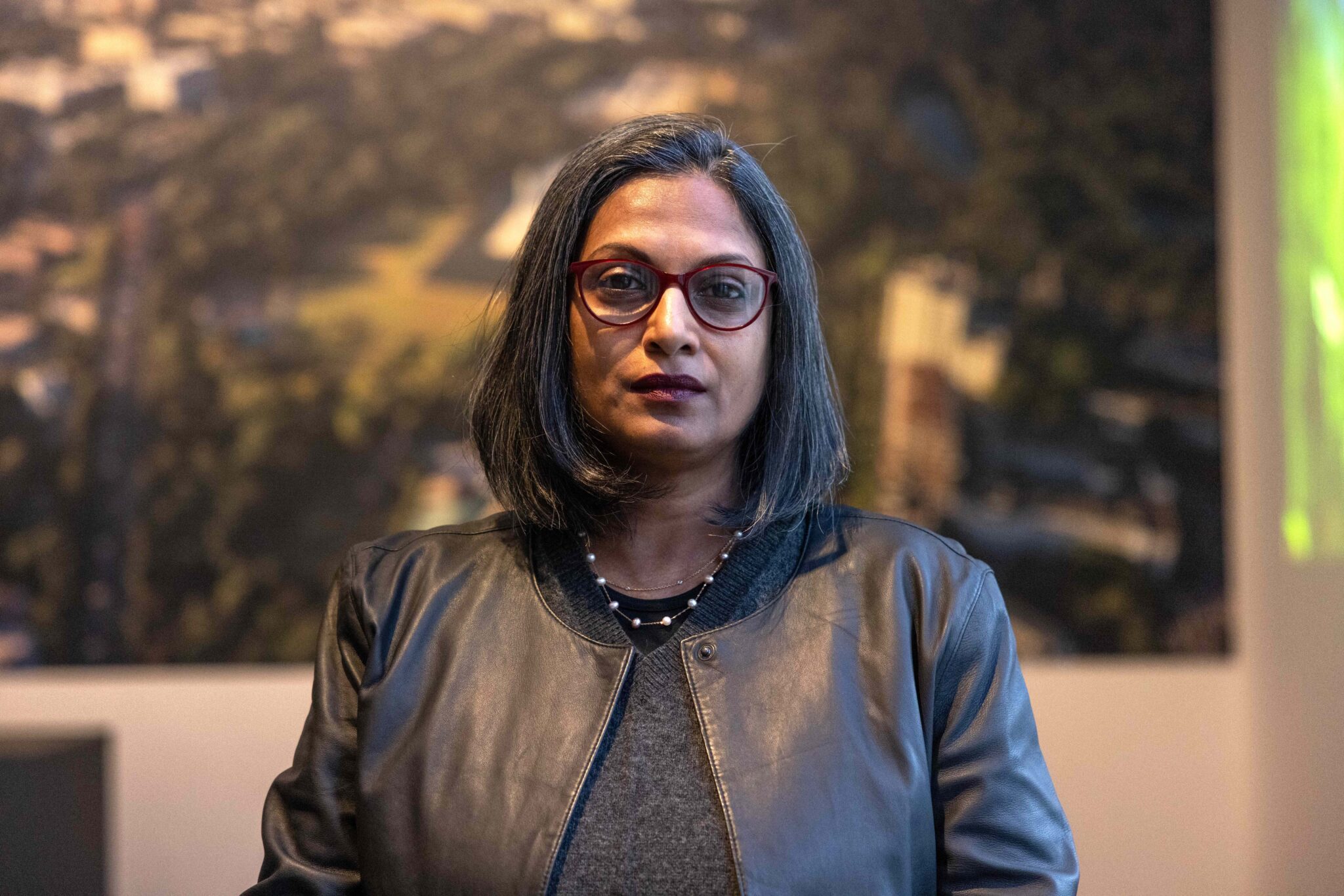Jeremy Dixon’s large-scale model of an unbuilt icon is installed at the Sainsbury Centre for Visual Arts

Vladimir Tatlin’s 1919 tower proposal for St Petersburg – a landmark of modern architecture – was never realised. Jeremy Dixon describes his ongoing involvement with the iconic project, whose latest incarnation is a 12-metre-high model now installed in the sculpture park at the University of East Anglia. The structure has been donated to the Sainsbury Centre for Visual Art by the Royal Academy of Arts, where it was first exhibited in 2011.
Vladimir Tatlin’s unrealised tower as it would have appeared today (image: Dixon Jones). Tatlin (1885-1953) was commissioned by the Soviet government to design the monument as a headquarters of the Third International, an international organisation that promoted global communism. It would have been over 400 metres tall.
The story of the project starts in 1971 when I was asked to undertake a reconstruction of the Tatlin Tower for the Art in Revolution exhibition at the Hayward Gallery. The exhibition designer, Michael Brawne, wanted models to be made of key Russian projects but the Soviet government was nervous about the exhibition and stipulated a maximum scale of 1:50. What they had forgotten was that the Tatlin Tower was intended to be 1,200 feet high so that even following their requirement, it would be possible to build a huge model of the tower.
We were immediately faced with a dilemma in relation to the source material. Vladimir Tatlin had made his own model which differed significantly from the most commonly used side elevation drawing. This drawing also differed from another drawing, an end elevation in which the spirals bear no relation to the first drawing. We were faced with a choice. Because Tatlin’s model had been remade a number of times, it seemed more interesting to attempt a reconstruction based on the key side elevation. The geometry was quite mysterious and only became clear when we came to understand that Tatlin had used a ‘hidden’ inclined cone of 24 members as the basis for setting out the spirals and their supporting structure. Evidence for this lies in photographs taken of Tatlin constructing his model, and researches done for earlier reconstructions.
Armed with this key piece of information, it was possible to make a series of small models that were accurate enough to be the basis for a 35-feet-high version to go on the Hayward Gallery terrace overlooking Waterloo Bridge.
I worked with Christopher Cross, Christopher Woodward and Peter Watson on the construction, and we were given advice of an exceptional quality by the structural engineer Sven Rindl. Sven was a natural draughtsman, sketching while he talked, resulting in a beautiful series of A4 sheets explaining how the tower might be seen as a structure. The Hayward version was made out of timber and we built it at night in two halves in the main gallery, assembling the whole out on the terrace.
In 2011 I was asked to recreate the tower by the Royal Academy, as part of its exhibition ‘Building the Revolution: Soviet Art and Architecture 1915-1935’. There the brief was for a steel version of the tower 12 metres high overall. This time we had the use of computer generated images and it was possible to make a 3D image for the constructors, MDM Props, to work from. This image, by Chris Milan, was created by modelling the curves of the elevation as a solid form and intersecting that with the cones that define the outer surface of the structure. From there the use of the 24 radials fixes the rest of the geometry.
A steel framework creates a twin helix that extends in a series of steps. The structure supports four large suspended geometric structures – cube, pyramid, cylinder and hemisphere. In the original tower these had specific functions and were designed to rotate at different speeds.
One of the entertaining aspects of working on these reconstructions is the way new images appear that extend an understanding of the tower. At the Hayward, I pointed a camera straight up through the structure producing some striking images of the spirals from inside the tower. In the current reconstruction we have been able to collage a computer-generated image into a view of St Petersburg – the river frozen and a typical plume of smoke drifting across from the factory chimneys.
Jeremy Dixon’s model of the Tatlin tower is now part of the collection of Russian avant-garde art, design and architecture at the Sainsbury Centre for Visual Art. It is the centrepiece of a wider season celebrating Russia at the centre, comprising two exhibitions (‘Royal Faberge’ and ‘Radical Russia’), two publications, a conference and many public events.
The Russia Season runs until 11 February 2018 and entry costs £12 or £10.50 concessions (free for Members and Student Members). Car parking and entry to the Sainsbury Centre are free, as are visits to the sculpture park to see Tatlin’s Tower. For more information see the centre’s website.





























